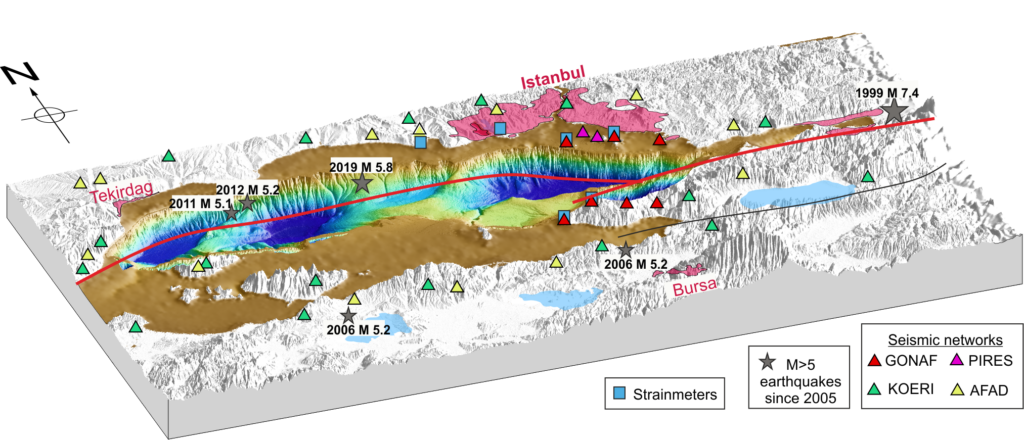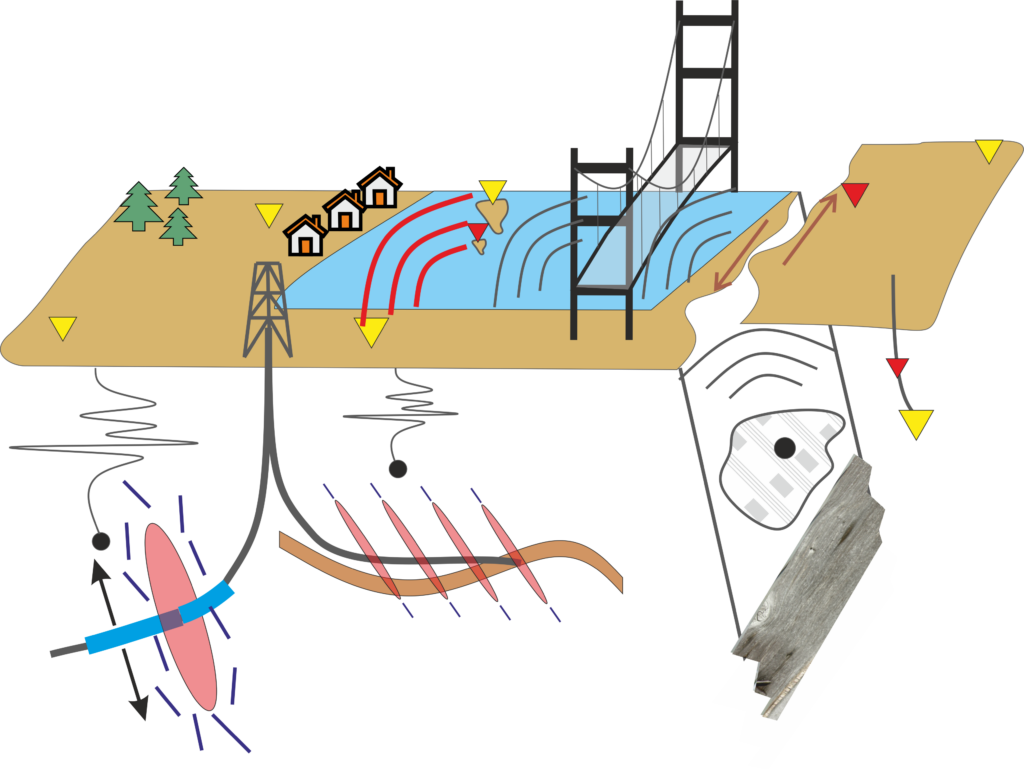Projects
Identifying earthquake nucleation processes for faults near urban areas (QUAKEHUNTER)


A longstanding, lingering question in geoscience is whether earthquakes show a precursory nucleation process. Precursory signals from well-recorded large earthquakes displayed widely different amplitude or duration, and some large earthquakes displayed no detectable precursors. The main objectives of the ERC-Starting Grant Project QUAKEHUNTER are (1) to determine the most effective approaches to detect fault-related transients preceding moderate to large earthquakes, and (2) to monitor seismic and aseismic processes and infer from them the fault conditions under which earthquake nucleation processes emerge, and the optimal instrumentation required to capture them. To achieve these, we will develop different methodologies based on a combination of supervised and unsupervised artificial intelligence to identify retrospectively earthquake nucleation processes for active faults near earthquake-threatened urban areas. The ultimate goal will be to test the performance of this novel earthquake forecasting methodology in near-real time.
We will analyze data from north-western Turkey, where the North Anatolian Fault is overdue for a magnitude M>7 earthquake directly adjacent to the Istanbul megalopolis with its >15M inhabitants. If successful, this could become in the future an essential ingredient for activating civil protection protocols to mitigate seismic risk.

Seismic and Aseismic deformation in the brittle crust (SAIDAN)


SAIDAN is a Helmholtz Young Investigators Group dedicated to the research in Seismology and Fault Mechanics. SAIDAN is the acronym for “Seismic and AseismIc Deformation in the brittle crust: implications for Anthropogenic and Natural hazard”.
The project has the following research topics:
(1) Generating a thorough, quantitative understanding on deformation processes ranging from aseismic slip to brittle failure in earthquakes.
(2) Characterizing precursory processes preceding the occurrence of large earthquakes in relation to both plate-bounding transform faults and reservoir engineering activities.
These topics are being investigated within two very different environments:



